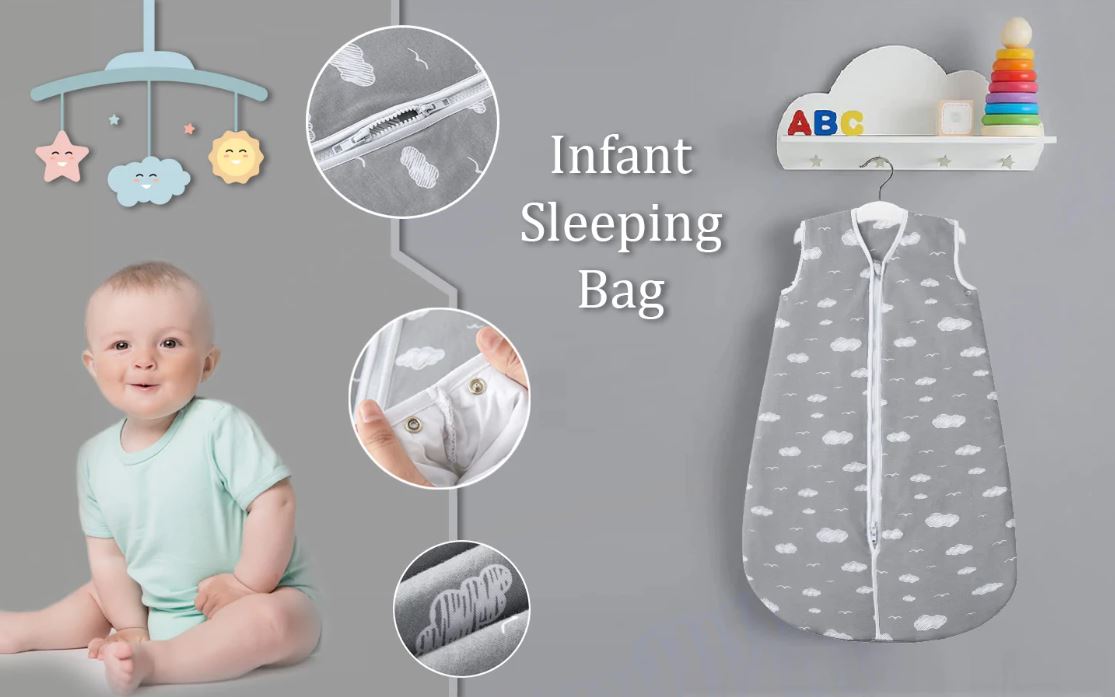The sleeping bag, also called a sleeping bag, is a safe and comfortable alternative to the blanket, which keeps the baby warm while he sleeps. Like a soft mini sleeping bag, this baby bed linen must adapt to your little one. Our advice for choosing the right baby sleeping bag.
The different models of sleeping bags
If you are expecting your first child, the term "sleeping bag" may be a bit vague, given the amount of clothing, furniture and care products to provide. A sleeping bag looks like a bag where we slip the baby to sleep. Much safer than a duvet or blanket, the sleeping bag envelops the child's body and keeps it warm.
There are three types of sleeping bags:
The sleeveless sleeping bag, the most widespread, has thin shoulder straps; The long-sleeved sleeping bag, ideal for cold winter nights, can have removable or fixed sleeves; The nomadic baby swaddle wrap, or travel sleeping bag, adapts to the stroller or the car seat.
The criteria for choosing a sleeping bag
Several criteria are taken into account when choosing a sleeping bag to offer sweet baby nights in complete safety.
The size of the sleeping bag
The sleeping bag size is chosen according to that of a baby. The sleeping bag must be able to properly wrap your little one so as not to bother him, but above all, to keep him warm. Sleeping bag sizes fall into three categories.
Size 1: from birth and up to about 6 months (length from 65 to 70 cm).
Size 2: approximately 6 to 18 months (length 90 cm).
Size 3: approximately 18 to 36 months (length 105 to 110 cm).
While these sizes are the most common, you can also find swaddle sleeping bag for premature babies in size 0 (length 50 cm) and larger sleeping bags for children up to 10 years old.
The material of the sleeping bag
Baby's skin is fragile and sensitive, so choosing a soft and breathable sleeping bag is recommended. Depending on the season and the room's temperature, the choice of sleeping bag can be made according to its material. Padded velor sleeping bag: ideal for winter, this very soft and breathable material helps keep the baby warm. The cotton sleeping bag: is fine and light, cotton is recommended in hot weather or in mid-season because it lets the baby's skin breathe. The polyester sleeping bag: is very light. The polyester sleeping bag is pleasant in summer, although the material is not natural. Other soft and warm materials for sleeping bags, such as fleece or muslin, are less common but just as comfortable to allow the baby to sleep well.
The TOG of the baby sleeping bag
If you're looking for a sleeping bag to complete your baby's wardrobe, you may have heard of the TOG. This heat index lets you quickly know if the sleeping bag is warm. The higher the TOG, the warmer the sleeping bag is. Sleeping bags are classified according to four TOGs:
A 0.5 tog sleeping bag is suitable when the temperature in the baby's room is between 22 and 25°C.
A TOG 1 is suitable for children's rooms maintained between 18 and 21°C.
A 2.5 tog sleeping bag will keep babies warm at a room temperature between 15 and 17°C.
A TOG 3 will be recommended when the baby's environment has a temperature below 15°C.
According to the TOG, you can choose a summer or a winter sleeping bag and thus ensure a cozy nest for toddlers while they sleep.
The closing system of the sleeping bag
Know that there are several ways to close a baby sleeping bag. This detail may seem trivial, but the closing system of the sleeping bag can make your daily life easier.
You can opt for a central closure (on baby's belly) or a side closure (on the baby's side). This is often composed of a zipper, but some models may also have buttons. You also have several options for the shoulders of the sleeping bag. You can choose a model whose shoulders do not open or whose shoulders open using buttons or press studs. The choice of sleeping bag closing system will depend on the use you will have of it, but also and above all on your personal preferences.


